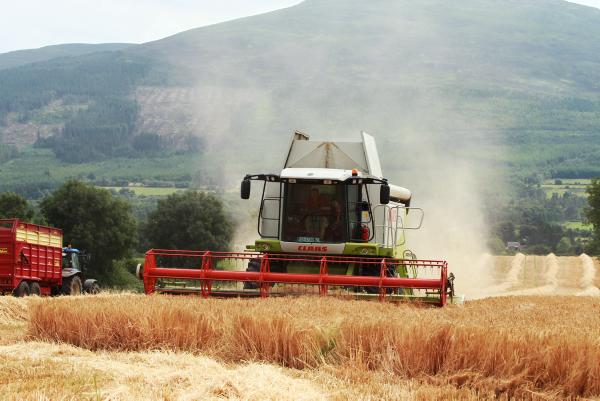Winter barley harvesting has begun but there is little yet to indicate yet that this part of our harvest will throw very high yields. Early winter barley yields are tending either side of 3.5 t/ac with up to 3.8t/ac in some fields and a very occasional report of a 4t crop. In general yields are back on last year by over half a tonne per acre.
Both two- and six-row crops have already been harvested and initial reports suggest no major yield advantage from the six-row varieties.
Only a small proportion of the crop has been cut to date and most believe that the later crops will have higher yield. But we have seen this expectation not being met in the past.
Grain quality is generally good. Some early crops that were affected with virus had specific weights below 60KPH. Healthy crops are reported to be well above the 62KPH level and up to 67KPH.
Demand for straw appears to be slow. Suggested prices range between €10 and €14 for 4x4 round bales. Where there is no local demand, growers will consider chopping as straw yields are reported to be good.
The main issue for growers is the poor price. Talks of €130/t for green feed barley or €165/t for dry barley will leave most growers in a negative income scenario. Sentiment may well be driving prices lower than necessary as demand could well act to consume much of any additional supply. But this will not be known until long after harvest.
Prices are also part of the income squeeze and the current levels of costs and prices are just not sustainable. It the current price levels continue they will inevitably result in decreased global production for 2015 and that in turn may lift prices towards year end. But the trade cannot depend on this if they are asked to purchase 90% of the 2014 crop in August and September.
“Grain farmers will once again be forced to subsidise grain production from their Single Farm Payment or other reserves,” said IFA grain chairman Liam Dunne. “This is not a sustainable position as any business that is not generating enough profit to allow for reinvestment is not sustainable,” Liam stated.
“Input suppliers have increased product prices in recent years on the back of rising grain prices but now that these prices have plummeted, input costs must follow in the same direction.
“With input costs now in excess of €1,000/ha for spring barley, a trend yield of 6.4t/ha would need a green price of €156/t just to cover variable costs. Full production costs are closer to €1,200/ha, requiring €188/t to break even. Current price offers are significantly below these levels and growers will struggle to meet their bills”, Liam stated.






 This is a subscriber-only article
This is a subscriber-only article










SHARING OPTIONS: